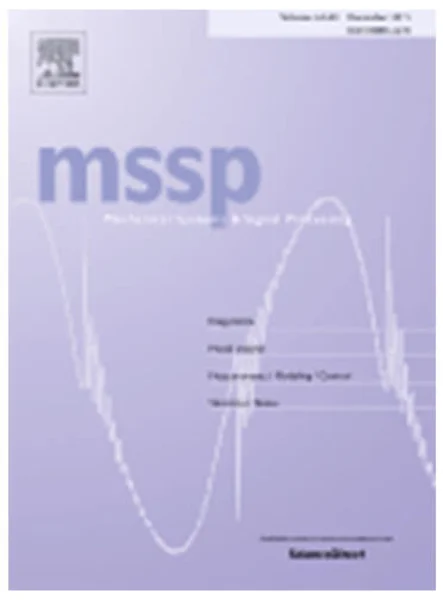-
modal identification of spindle-tool unit in high-speed machining
جزئیات بیشتر مقاله- تاریخ ارائه: 1390/01/01
- تاریخ انتشار در تی پی بین: 1390/01/01
- تعداد بازدید: 335
- تعداد پرسش و پاسخ ها: 0
- شماره تماس دبیرخانه رویداد: -
the accurate knowledge of high-speed motorised spindle dynamic behaviour during machining is important in order to ensure the reliability of machine tools in service and the quality of machined parts. more specifically, the prediction of stable cutting regions, which is a critical requirement for high-speed milling operations, requires the accurate estimation of tool/holder/spindle set dynamic modal parameters. these estimations are generally obtained through frequency response function (frf) measurements of the non-rotating spindle. however, significant changes in modal parameters are expected to occur during operation, due to high-speed spindle rotation. the spindle's modal variations are highlighted through an integrated finite element model of the dynamic high-speed spindle-bearing system, taking into account rotor dynamics effects. the dependency of dynamic behaviour on speed range is then investigated and determined with accuracy. the objective of the proposed paper is to validate these numerical results through an experiment-based approach. hence, an experimental setup is elaborated to measure rotating tool vibration during the machining operation in order to determine the spindle's modal frequency variation with respect to spindle speed in an industrial environment. the identification of natural frequencies of the spindle under rotating conditions is challenging, due to the low number of sensors and the presence of many harmonics in the measured signals. in order to overcome these issues and to extract the characteristics of the system, the spindle modes are determined through a 3-step procedure. first, spindle modes are highlighted using the frequency domain decomposition (fdd) technique, with a new formulation at the considered rotating speed. these extracted modes are then analysed through the value of their respective damping ratios in order to separate the harmonics component from structural spindle natural frequencies. finally, the stochastic properties of the modes are also investigated by considering the probability density of the retained modes. results show a good correlation between numerical and experiment-based identified frequencies. the identified spindle-tool modal properties during machining allow the numerical model to be considered as representative of the real dynamic properties of the system.
مقالات جدیدترین رویدادها
-
استفاده از تحلیل اهمیت-عملکرد در ارائه الگوی مدیریت خلاقیت سازمانی و ارائه راهکار جهت بهبود
-
بررسی تاثیر ارزش وجوه نقد مازاد بر ساختار سرمایه شرکت های پذیرفته شده در بورس اوراق بهادار تهران
-
بررسی تأثیر سطح افشای ریسک بر قرارداد بدهی شرکت های پذیرفته شده در بورس اوراق بهادار تهران
-
بررسی تأثیر رتبه بندی اعتباری مبتنی بر مدل امتیاز بازار نوظهور بر نقد شوندگی سهام با تأکید بر خصوصی سازی شرکت ها
-
تأثیر آمیخته بازاریابی پوشاک ایرانی بر تصویر ذهنی مشتری پوشاک ایرانی (هاکوپیان)
-
ارائه سیستم یکپارچه مدیریت پایگاه داده در تعامل با مدل سازی اطلاعات ساختمان
-
طرح اختلاط بتن های سبکدانه با استفاده از مدل دوفازی
-
رابطه مؤلفه های شخصیت با افسردگی در دانشجویان علوم پزشکی
-
فناوری لوله های حرارتی با استفاده از نانوسیالات عامل، راهکار موثرتبادل حرارت و بهینه سازی مصرف انرژی
-
حاشیه های انجماد سریع و نقش آن ها در سیر تحولی گرانیتوئیدهای الیگودرز
مقالات جدیدترین ژورنال ها
-
مدیریت و بررسی افسردگی دانش آموزان دختر مقطع متوسطه دوم در دروان کرونا در شهرستان دزفول
-
مدیریت و بررسی خرد سیاسی در اندیشه ی فردوسی در ادب ایران
-
واکاوی و مدیریت توصیفی قلمدان(جاکلیدی)ضریح در موزه آستان قدس رضوی
-
بررسی تاثیر خلاقیت، دانش و انگیزه کارکنان بر پیشنهادات نوآورانه کارکنان ( مورد مطالعه: هتل های 3 و 4 ستاره استان کرمان)
-
بررسی تاثیر کیفیت سیستم های اطلاعاتی بر تصمیم گیری موفق در شرکتهای تولیدی استان اصفهان (مورد مطالعه: مدیران شرکتهای تولیدی استان اصفهان)
-
بررسی رابطه تناسب شغل - شاغل و رضایت شغلی با عملکرد شغلی کارکنان
-
نظام اداری ایران: تحلیلی بر مشکلات و چالش ها
-
مروری بر عوامل موثر جهت افزایش ایمنی و کاهش تصادفات در قوس ها
-
تاثیر جو سازمانی بر ابعاد مالی و غیر مالی عملکرد شعب مراکز استانی بانک توسعه صادرات ایران با استفاده از مدل ارزیابی مالتیک
-
the quintessential categories of the author’s time and literary time




سوال خود را در مورد این مقاله مطرح نمایید :